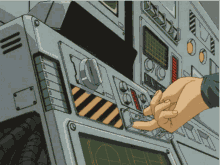A blog for anything I feel like posting. Also I should update this with about me info since mobile can't access my about page | J | queer | They/She/He (but that last one’s more out of convenience I’m some sort of nonbinary transfemme girlboy manwoman) | March 27 1991 currently 34 | <3 moveslikebucky | fixate on a lot of things but they're all pretty constant throughout just sometimes bomb tags | lichrally just stuck with this url the past nine decade plus change because "Great Vest Bro Han Solo shrugging gif" is my biggest most impactful online joke and I wasn't OP on the original post I made the joke on so I'm kinda stuck with this to link myself to it | Hi this is actually a little bit longer than my actual about page that I haven’t touched in years so thank's for sticking with it this far have a lovely day
Last active 60 minutes ago
Don't wanna be here? Send us removal request.
Text
listen: cheating at baseball is like a whole second sport. as long as baseball has existed, people have been cheating at it
22K notes
·
View notes
Text
sorry bro I didn't hear your bit I got a little distracted reflecting upon my inadequacies
63K notes
·
View notes
Photo

Military bike Columbia Model 40 with a machine gun Colt-Browning M1895, USA, the end of the XIX century.
185 notes
·
View notes
Text



Trader is such a fun plane.
Oshkosh 2024
9 notes
·
View notes
Text
Ok everyone let’s think beautiful thoughts about masculine women today.
22K notes
·
View notes
Text


CHITTY CHITTY BANG BANG (1968) dir. ken hughes
463 notes
·
View notes
Text
Just typed up 3 paragraphs filled with vitriol aimed at this country's diseased hero worship of our special forces stormtroopers who often operate as a cartel in the conflict zones we initiate or insert ourself into, but I think the most important takeaway is that everything that'll be revealed to have happened at Fort Bragg and wherever else these goons were fucking around is also happening on countless overseas US military base with 1/100th of the scrutiny shown here. This is the imperial frontier coming home, or as this one meathead without a trace of irony or self-awareness put it:

3K notes
·
View notes
Photo



The Matrix (1999) The Matrix Reloaded (2003) The Matrix Revolutions (2003)
24K notes
·
View notes
Text

Why are some microorganisms boring?
Cockell & Herrera, 2008
559 notes
·
View notes
Text





Demolition Man (1993) // Dir. Marco Brambilla
358 notes
·
View notes
Text
Now a house next to us, about 500 meters away, was bombed. Several missiles hit the same place. This is very terrifying.
2K notes
·
View notes
Photo

Fallout food agAIN The nuka cola ice cream float will probs kill you butthink of the aesthetic
2K notes
·
View notes
Text
My T-shirt with the entire text of Borges' theoretical Library of Babel is raising a lot of questions already answered by the shirt, somewhere.
18K notes
·
View notes
Text
new stimtoy idea: 80s-90s anime sci-fi cockpit




Put me in one of these bad boys and I will be entertained for hours
28K notes
·
View notes


